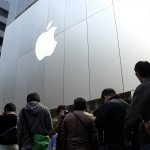Apple’s data gold mines to fund its AR adventures?

As the world’s most valuable company, Apple can change how people live their lives in many parts of the world. Perhaps it can’t, as Steve Jobs once opined, “make a dent in the universe,” but it’s certainly a company that others follow. Part of its success is in engineering, partly rooted in design, and certainly, marketing has played a huge part in its success to date, too. It’s successfully transitioned from being a computer hardware vendor to one of the world’s most desired luxury brands, more akin to Maserati and Rolex than to Hewlett Packard and Dell.
Tim Cook’s company becomes headline news with every quarter’s financial results release, and while he’s unlikely to be having an Alexander the Great moment, and weeping because there are no more worlds to conquer, what’s becoming apparent is that any company can only sell so many cellphones. The iPhone, Apple’s big money maker, currently makes up about half of its revenues, down from close-on two-thirds around 2015. The drop in hardware sales (AirPods, Apple Watch, and computer sales aren’t the big sellers, relatively) has led many commentators to talk about Apple’s services and how subscriptions, fees, and levies on third-party sales are becoming more important elements of Apple’s future income.
The gadget-obsessed technology industry (and every Apple hardware enthusiast) is expecting some kind of VR (or AR) headset to be revealed next year (2023), perhaps predicting such a device will revitalize stalled hardware sales growth. The consensus appears to be that the first iterations of a headset will provide virtual reality functions, fed from a walled-garden software store and running on homegrown M1 chips running a new Apple-penned OS variant. If Apple can get ahead of its competitors with a usable and practical headset, it will cause a big sensation, no doubt, but any VR style of device should only be regarded as a stop-gap: a kind of live research product early adopters will pay several thousand dollars for.
The big reveal is likely to be a few years in the coming, in the form of an augmented reality device, possible like Google’s defunct Google Glass. Wearing a pair of spectacles for an all-Apple experience will be a significant improvement on having to don a crash helmet for a business meeting with the regional sales director of Bob’s Widget Company – the current state of VR in office-based businesses (i.e. nowhere).
However, hardware research and development is very expensive, especially when your customers expect high-quality experiences from premium hardware and seamless software integration. Funding this next phase of Apple’s future – essentially, a wholly new product sector if it’s to succeed at the required scale – will need some cash.
Services are much more profitable than selling shiny new things that people can hold. Estimates vary, but margins on Apple’s services are reckoned to be in the 70-80 percentiles, compared to a modest yet still attractive 30% or so from hardware. That’s not to say all services Apple offers are cash cows: Apple TV streamed content competes in a crowded market, and unlike some of the other sectors in which it operates, there’s no such thing as a luxury TV series or a movies studio that can turn out only Oscar winners.
One service-based market we’d expect to see more Apple activity in is one in which the company has already made in-roads: medical technology, a natural evolution from its health monitoring Apple Watch. Its pairing with third-party devices such as glucose monitors and in-built ECG capabilities make it the natural basis for not only more hardware advancements but also as the potential basis of an incredibly lucrative medical data brokering business. On the latter score, Apple will have to consult its well-thumbed “we protect users’ privacy” playbook to convince consumers that their physiological and mental metrics are in safe hands. But Apple’s slick PR and marketing operation, aided by the personnel it’s shipped in from the world’s leading luxury brands, are past masters at spin. If anyone can obfuscate the issues behind selling medical information to the private health sector, they work in Cupertino.
Of course, Apple ingests data from its users at every hardware and software level including the Apple Watch now. It’s been able to claim a role as a more privacy-focused company simply because it’s not had reason to need to sell information to third parties. But as health tracking on an Apple Watch morphs into health care capability from the next generations of wearables it produces, it will be sitting on a goldmine of information. And gold’s value is only ever realized when it’s mined and sold off.
Shareholders like to see graphs that head upwards as they move right, and funding a new wearables sector in AR won’t come cheap. Sure, Apple has plenty of cash, but the company will need to look to monetize what resources it has to fund the necessary product development. The deepest mine in its possession is data, and medical data is the richest seam.










